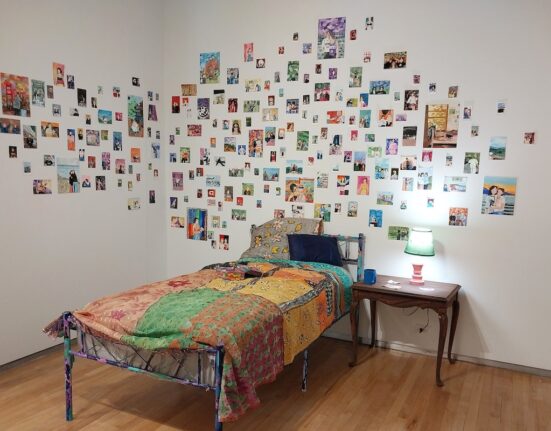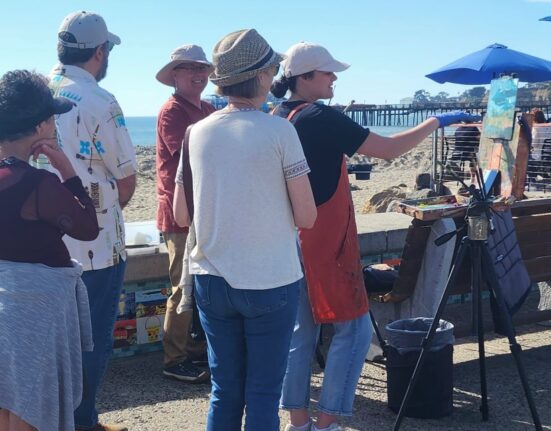“I think the winners this year really demonstrate the depth and breadth of artistic pursuit that we see here in Canmore. They’re each doing something very different, but they’re all quite committed to what they’re doing,” said Carpenter.
CANMORE – A diverse set of emerging artists has been awarded the 2023 Lamphouse Endowment for the Arts Fund to aid in artistic endeavours.
Three artists – Hannah Antonsen, Nic Latulippe and the rockstar band of Oliver Robins, Charlie Kestle and Timmy Mann – were selected for their portfolios of work, commitment to their craft and for their growth as artists.
“I think the winners this year really demonstrate the depth and breadth of artistic pursuit that we see here in Canmore. They’re each doing something very different, but they’re all quite committed to what they’re doing,” said Jamie Carpenter, the Town of Canmore’s cultural development coordinator.
The bursary – held every year by the Banff Canmore Foundation and administered by the Town of Canmore – is a chance for emerging artists to receive financial aid to further their ambitions. The winner of the Lamphouse Bursary Award receives $3,000, with a youth award and a special jury award each valued at $1,000.
“The Town of Canmore really wants to promote and encourage a well-rounded community, arts and cultural scene and this is one way we can help to do that. To encourage young artists to pursue their craft and to keep with it and to really help to enhance our community’s well-being,” said Carpenter.
The young ducks
Taken hold of the youth award is the Grade 8 rockstar trio, The Ducks.
“I was in the car driving home from climbing and the guy called, so it was kind of perfect timing … and he told us that we won, and I was super excited,” said Mann, lead vocalist and guitarist. “And then like two hours after, I called my friends because I was so excited and we kind of just yelled for like a minute or something.”
Robins, Kestle and Mann were chosen for the youth award for their aspiring dreams and commitment to achieving them.
“I saw this video of Metallica playing in Russia and the crowd was insanely huge. I was just imagining being on the stage and [thinking] that’d be really cool playing for all those people. The energy would be awesome,” said Mann.
Using the grant money, Robins said they plan on booking time at a studio to record their original songs for the first time to debut their names on streaming platforms.
The three bandmates started their music endeavours last summer when they plastered handmade posters around town, earning themselves two gigs.
Since then, they have been jamming hard in Mann’s garage every Friday after school.
“They really seem to want to pursue their music, and it’s quite exciting to see that among such young performers,” said Carpenter.
The Ducks plan on returning to the stage for the Canmore Folk Festival for its free Friday concert on Aug. 2.
‘Make work that I’ve been dreaming of’
Antonsen, a textile artist, took home the Lamphouse Bursary Award with her creative ability to make rugs, her commitment to growth as an artist and her community building.
Antonsen uses an electric tufting gun which pushes yarn through a supporting fabric. With this tool, she can make colourful, detailed mountain scenes, dogs and the moon, among others.
Using a tufting gun, as opposed to making rugs under her own power, also allows her to create art more comfortably due to having a physical disability.
“I have to be really mindful of my body and I think tufting is physical, but better for me than something like rug hooking, which is a non-mechanical version of making a rug. I’ve done it in the past, but I found that I just got really fatigued with that repetitive motion,” said Antonsen.
Antonsen said winning the bursary will allow her to buy a pneumatic tufting gun, which would allow her to create artwork that she has been “dreaming” of making.
“When I first started tufting, I wanted to make really textural pieces and the gun I bought at the start is a good entrance into that, but I’m going to be able to make work that I’ve been dreaming of with this bursary,” said Antonsen.
Antonsen is already envisioning what she will be making in the near future with the help of the grant.
“I’m hoping to make art which explores landscapes threatened by climate change,” said Antonsen. “This would be large scale work, and they’d welcome viewer interaction, so people can reach out and touch and feel the landscape. In doing so, you’re able to change their perspective on this issue … and the viewer can see how your small actions have a large impact on the system.”
‘A Tipping Point’
Nic Latulippe was chosen for his in-depth documentation and narrative of Canmore’s “ever-changing nature” and for providing a voice to those who don’t have one.
His ongoing series, Canmore: A Tipping Point, features black and white film photographs of development and life in the town which reflect Latulippe’s short paragraphs about issues he’s found living in Canmore.
“I think the thing is Canmore has an ever-changing nature and I think Canmore: A Tipping Point focuses on the grey area of this consumerist culture and the people who have a lot of love and value for this town and can maybe not remain here anymore because profits or corporate greed and stuff like that are just kind of kicking them out slowly,” said Latulippe.
“I guess it’s more just having the people who are unspoken for. It’s providing them a voice … because not everyone can be heard.”
The analog photographer grew up in the Bow Valley and participated in the high school film photography program Through the Lens, which he and Soloman Chiniquay are reviving with the help of the Whyte Museum of the Canadian Rockies and the Wim and Nancy Pauw Foundation. The program originally ran from 1997 to 2017, but was reborn in February 2024.
Latulippe said the grant will help him continue the series by covering costs such as materials and the price of living. He has also been using his own methods to cut down on the rising cost of film by using expired film, rolling his own canister out of long portions of film, and developing and scanning his shots.
“I definitely made it as cost-effective as possible by developing all of my own stuff since I was a kid as well as scanning my own stuff,” said Latulippe. “I tend to shoot some expired stuff, or even just buying my film in 100 to 200 feet and rolling it into my own canisters.”







